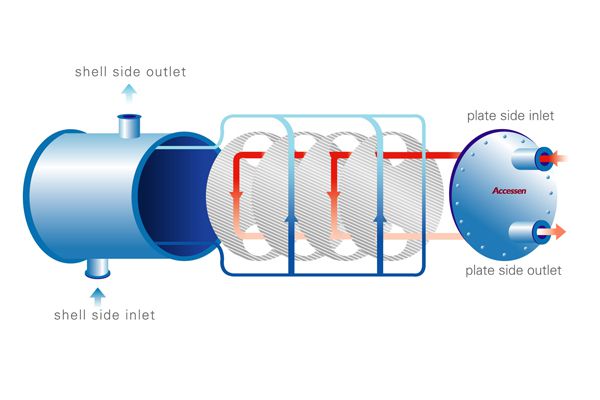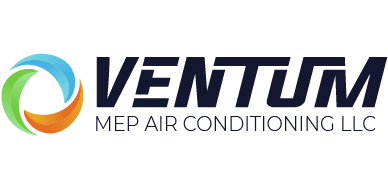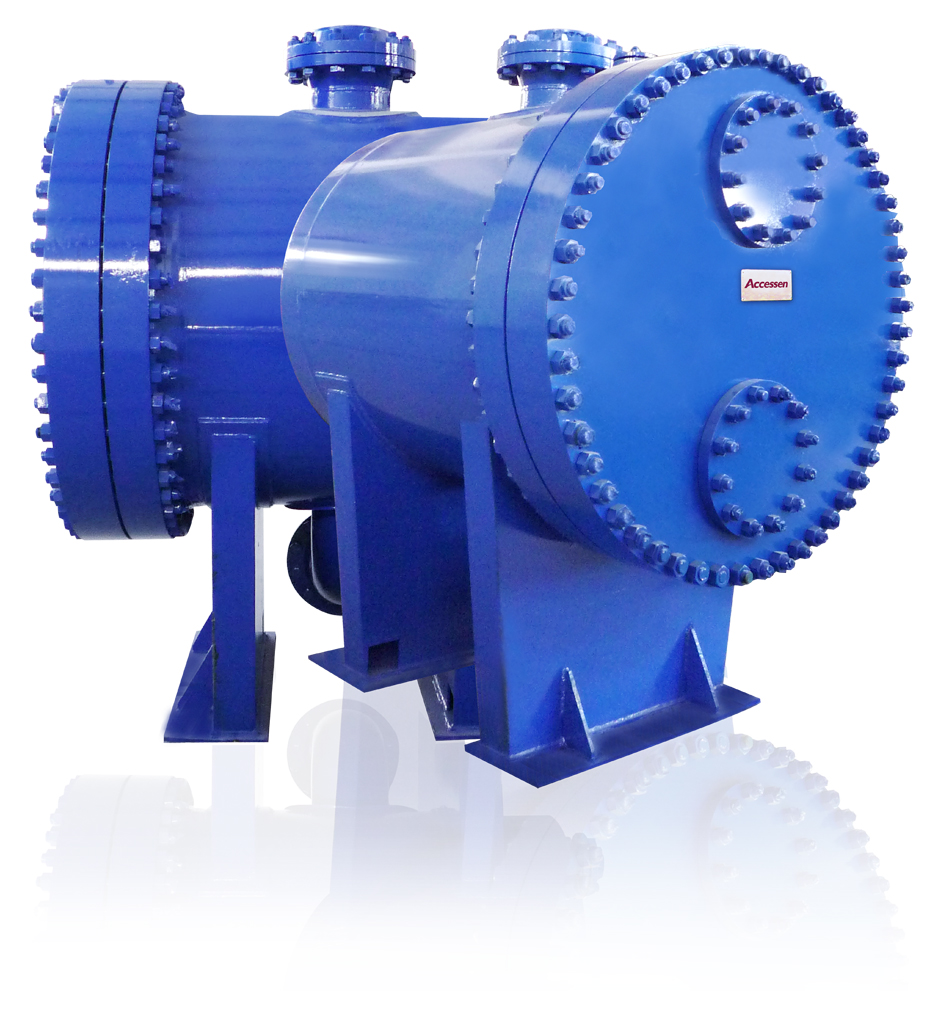
All-Welded Plate & Shell Heat Exchanger
Retains the full counter-current heat exchange characteristics of the detachable plate heat exchanger, which is 3-5 times more efficient than the traditional shell-and-tube heat exchanger. There are no gaskets on the original semi-welded heat exchanger. Depending on the application, the plate and frame can be differentiated into three types:
1. Which cannot be disassembled
2. Detachable on one side
3. Detachable on both sides.
| Plate Material | Media |
| Stainless steel Alloy 316L/Alloy 304 | Pure water, Revir Water, Edible oil, Mineral Oil. |
| Titanium | Sea Water, Salt Water, Salt Material. |
| Ni | High concentration caustic soda. |
| Allay C276 | Concentrated Sulfuric Acid, Hydrochloric Acid, Phosphoric Acid. |

Applications:
- Machinery manufacture.
- Marine.
- Desalination.
- Electrical Energy.
- Pharmaceuticals.
- Food & Beverage
- Pharmaceuticals.
- Paper Industry.
- Refrigeration
- Industrial, Organic Chemical.
Benefits:
- Flowpath design of the plate for the perfect distribution, no dead zone.
- Ultra-wide flow.
- Non-contract guarantee.
- The largest single-sided channel up to 5-20 mm.
Specifications:
- Maximum processing capacity: 2500m³/h.
- Maximum design pressure: 60bar.
- Maximum temperature: 500℃
- Plate materials: AISI304, 316, 316L, Titanium, Hastelloy, Ni, SMO254
Which certificates are available for the heat exchangers?
ASME, ISO, AHRI, BV, DNV etc… Case by case certificate was allowed.

